The content of the article
Dough is considered to be an indispensable ingredient, on its basis pies, pizza, dumplings and various desserts are prepared. Not every housewife has the desire and time to spend an independent kneading the dough, so they use the purchased frozen product. To subsequently use the composition, it is necessary to defrost it properly. Consider effective ways to help carry out the procedure without compromising the structure. We give practical recommendations, we highlight important features.
How to choose a frozen product
- Purchased composition is subjected to rapid freezing, with the result that the dough is stored longer. It is important to remember forever that you can not freeze the product twice. There are several main types of dough, each of them uses its own version of freezing.
- Depending on the purpose, the following varieties are distinguished: puff, yeast-free, yeast, shortbread, gingerbread, etc. Before purchasing, carefully evaluate the product for compliance with the storage conditions.
- It is worth remembering forever that high-quality dough based on natural ingredients cannot have a low price policy. As a rule, leading manufacturers require 80-140 rubles per 0.5 kg. composition.
- Examine the dough for the presence, or rather the absence, of foreign debris. The composition must move freely within the package and not stick to the film. The correct dough has a frosted surface, the product is twisted into a roll.
- Examine the label. On the reverse side you should find information on the manufacturer, supplier, date of production and packaging. Particular attention is paid to the duration of storage, it should not be extremely high.
- The film in which the dough is placed must be hermetically sealed. The presence of holes or welded places suggests that the composition was previously opened. It is also important to know how to freeze the dough.
- Of particular importance is the number of layers.The larger it is, the softer, richer and more nutritious it will be ready-made pastries. As a rule, the yeast dough has 30–40 layers, while for yeast-free composition, the index varies within 220–230 layers.
- Read the “Composition” box on the back of the package. Make sure that the dough does not contain harmful ingredients that you do not know. Ensure that there are no cracks or crusts on the surface of the product.
How to freeze the dough yourself
- Many housewives understand that the quality of the dough will be higher if you freeze it at home. After the procedure, the product is sent to the freezer, such a move will help to preserve its beneficial properties.
- Not everyone knows that not only “raw materials” are subject to freezing, but also finished products based on them. These include buns, pies, dumplings and even bread. In this case, the shelf life will be 1.5-2 months.
- To freeze the cooked dough correctly, roll a “sausage” out of it, then chop it into pieces. Wrap items in a tight plastic bag. Ensure that no moisture enters the package.
- Send the composition to the freezer.Make sure that the cavity is set to the minimum temperature. Such a move will provide quick setting. After two weeks the temperature can be added by 2 degrees.
- To increase the storage time to 3 months, place the finished dough pieces correctly. Place the yeast dough at a distance of 2 cm from each other, as it will begin to increase in size after freezing.
- It is important to remember that any frozen dough should be stored in the refrigerator for no longer than 4 months. After the specified period, the composition loses its properties, becomes less sticky and cracks. Do not re-freeze after partial use, send leftovers in the trash.
- You can hold freezing in foil. To do this, sprinkle the chopped pieces with flour, knead a little. When the surface becomes completely matte, wrap the product in foil. Avoid ingress of air and moisture.
Effective defrosting methods
There are several basic technologies that will help defrost the dough without affecting the structure. Particular attention is paid to the puff composition, it can not be thawed using thermometers.
Method number 1.Natural conditions
This variant of the dough processing is also called slow, because the procedure takes place under natural conditions.
Open the package with the dough, shift it to a flat dish or chopping board. Leave for 4 hours at room temperature. During this period, the dough thaws, with the result that it can be used for cooking.
Every hour, turn the composition to defrost evenly. If the dough is twisted into a roll, after 2 hours it can be unrolled.
If you have time, move the composition from the freezer to the box for storing vegetables and fruits (bottom of the refrigerator). In this way, the dough will defrost in 10-12 hours, it all depends on the size of the serving.
Method number 2. Oven
Preheat the oven to a temperature of 90 degrees. For 10 minutes, make sure that there are no fluctuations in the set mode.
Take a baking sheet, turn the parchment paper in 2 layers, sprinkle it with flour. Remove the dough from its packaging (!), Then place it on a baking sheet.
Send the composition in the cavity of the cabinet, stick to the middle shelf. The duration of defrosting is about 3 minutes, not longer.Throughout the period you need to follow the process so that the dough does not bake from above.
Method number 3. Heating radiators
If it is not possible to use the oven, resort to heating appliances. It is possible to use both a regular radiator and an oil heater. The method is suitable for defrosting dough during the cold season.
Place the product on a flat dish, place it on top of the heater. Watch the process carefully, turn the dough every half hour.
It is important to prevent the formation of a peel, which usually appears in the process of weathering. To do this, put a piece of food film on the dough. The duration of defrosting depends on the room temperature. As practice shows, the dough becomes soft for 1.5-2 hours.
Method number 4. Microwave
In most cases, after defrosting in a microwave, the dough loses some of its taste. To prevent this, spend a small preparatory stage.
Remove the composition from the freezer, leave it on the middle or lower shelf of the refrigerator for 45 minutes. During this period, the composition softens, as a result of which the defrost will take place without compromising quality.
After preparation, begin the procedure. Remove the product from the packaging, put it in a glass container for the microwave. Cover with a lid, leaving a small hole.
Set the power to about 90W or use the "Defrost" mode. It is difficult to say for sure how quickly the dough will defrost. It all depends on the individual characteristics of the device.
To begin, set 10-15 minutes, after this period, you can evaluate the result. Every 30 seconds pause the microwave, turn over the dough.
Such a move will allow the composition to defrost evenly. Otherwise, a crust will appear on the surface or the dough will begin to bake locally.
Method number 5. Water
Many housewives prefer to defrost the dough, as they say, the old fashioned way. To do this, use cold or room temperature water.
Prepare tight plastic bags without holes. You will need about 5-6 pieces. It is important that the liquid does not penetrate into the cavity, otherwise the dough will become unusable.
Wrap the product in polyethylene, tie it tight. Pour cold water into the bowl, lower the dough into the cavity. Remove it after 20 minutes.
Now fill the container with slightly warm water, put the dough back in again. Remove it after 35-50 minutes. During this period, the product is thawed. To increase the effectiveness of the procedure, change the cooled water with warm water every 5-7 minutes.
How to defrost puff pastry
Layered dough is considered to be the most capricious, so you need to approach the defrost wisely.
- It is important to remember forever that the product cannot be defrosted in a microwave or oven. For urgent defrosting, heating devices are used (stock heating or oil fireplace).
- Defrosting by natural means is considered the best and correct way. To do this, leave the product at room temperature for 3-4 hours. Do not forget to cover the dough with food film (you can replace with a gauze cloth).
- If you are in a hurry, use the defrost in water. However, do not place the dough in a warm liquid. Water should be at room temperature. Otherwise, the dough will lose its layer structure.
- If we are talking about puff yeast dough, there is another way. Wrap the frozen product in food foil and gauze fabric.Turn on the gas burner, send the dough into a glass bowl and place it at a distance of 30-40 cm from the device.
There are not many ways to defrost the dough at home. The fastest option is to use a microwave or oven, but these methods are not suitable for puff pastry. You can leave the product at room temperature or place it in water. Choose your favorite method, proceed to its implementation.
Video: how to roll puff pastry

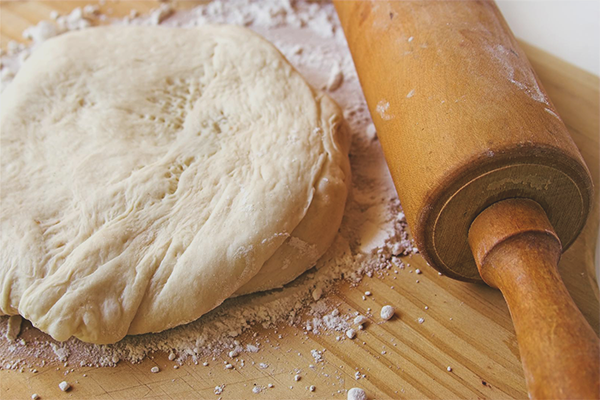
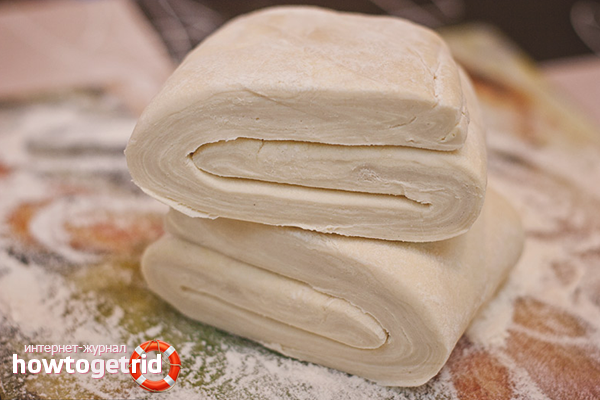
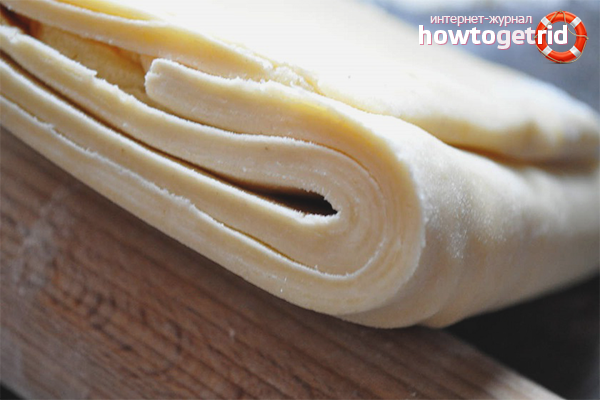

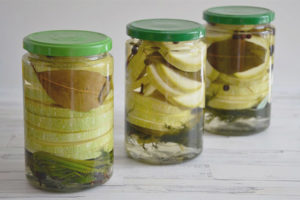

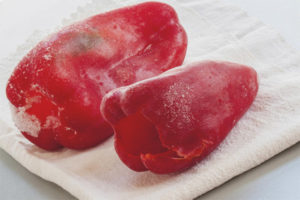




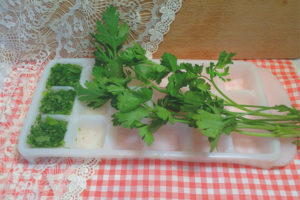
To send